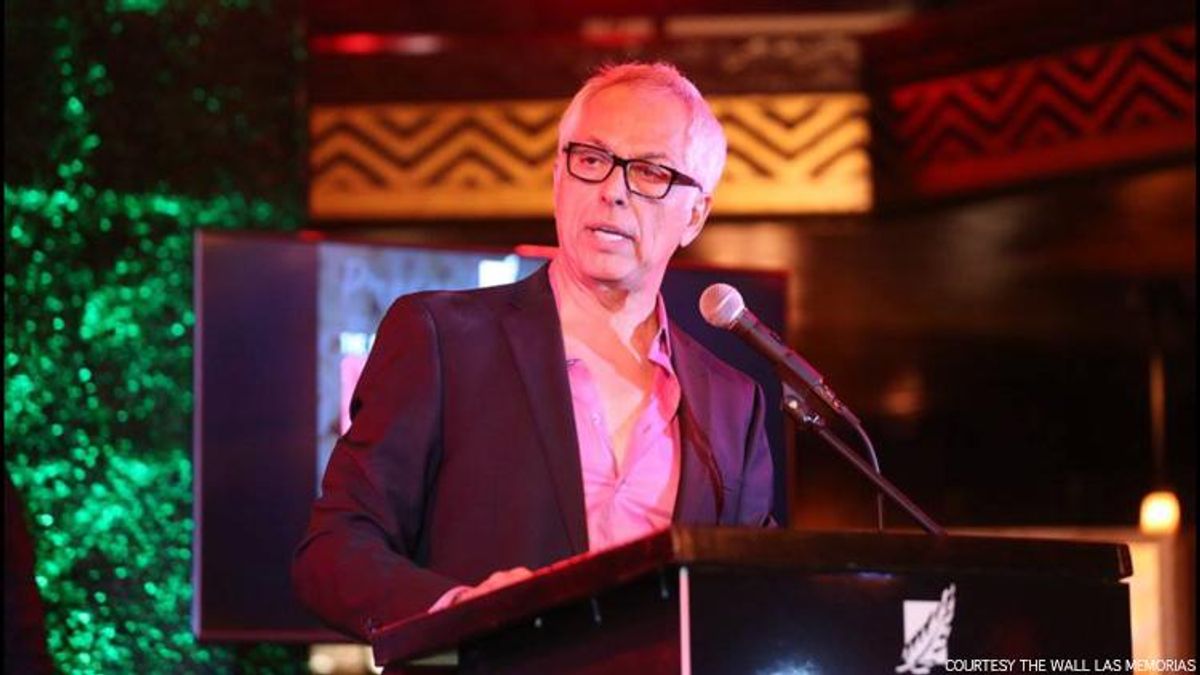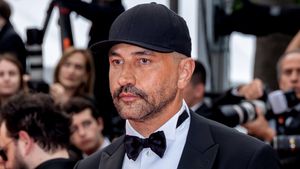[Haga clic aquí para leer este artículo en español.]
At the tender age of 17, Los Angeles native Richard Zaldivar first embarked on what would become a lifelong dedication to his roots and community. His amazing journey started with the role of president at a local youth group, where he organized community meetings to help educate his peers about addiction issues and community involvement and leadership. A few years later, Zaldivar moved into the political realm when he worked on a campaign for L.A. councilman Art Snyder. Zaldivar ended up working with Snyder for the next 13 or so years. It was during this time that he led the successful effort to save Cathedral High School in northeastern L.A. from closure and demolition.
“From there I went to go work for the city attorney in L.A. Then I left there [and] did some political campaigns,” he recalls. And like many living in the L.A. area, Zaldivar occasionally turned to the entertainment industry to make ends meet. “I worked as a screen extra. I was a member of the [Screen Actors] Guild — and then I founded the organization, The Wall: Las Memorias, in 1993.”
Though Zaldivar is not living with HIV himself, as a young gay Latino witnessing the AIDS epidemic of the 1980s and ’90s firsthand, the devastation hit too close to home to ignore. After learning his dearest friend had contracted HIV, Zaldivar jumped into action as a way to combat his feelings of helplessness over the epidemic that raged violently around him.

Richard Zaldivar (second from right) participates in a Latino men’s group discussion in 1997
“In about 1989, my best friend, David Ruiz, had shared with me that he was HIV-positive and he didn’t want anyone to know,” Zaldivar recalls. “And that left a very lasting impact in my life — because he was my best friend, and just simply the word ‘HIV’ scared the hell out of him. It had the stigma, so not many people found out.”
Soon after, Zaldivar says, “I got sober from alcohol, came out of the closet, and committed to building a monument to people who had passed from AIDS. The purpose of that, for me, was to create a place where families could openly grieve, without stigma, their lost loved ones.”
He says that in addition to honoring and remembering those lost to the epidemic, he hoped that the memorial would also serve as “a conduit for conversation around HIV in the Latino community.”
In 1993, The Wall: Las Memorias was born — as an idea anyway — though “it wasn’t easy starting an organization,” admits Zaldivar. “We did a lot of volunteer work. Early on, we created the Latino Men’s Group, which was really a great foundation for the way we do work in the agency today. And basically, we would serve approximately 100 men a week in group support meetings. There were very cultural, very spiritual groups [that were] very successful… we would have almost all of the participants take HIV tests every six months at a facility. And in those days, that was unheard of.”




The Wall: Las Memorias AIDS Monument in East L.A. and some of its events over the years
“So that was our start in HIV prevention,” he continues. “And then we got funding for the AIDS monument…with the support of then-Assemblymember Gilbert Sedillo, Mayor James Hahn, and foundation dollars and other Californian endowments supported us. Even the Los Angeles Episcopal Diocese supported us.”
Zaldivar explains that incorporating significant cultural elements to The Wall’s programs, like faith and spirituality, has been key in reaching the Latinx community. “We had Catholic priests coming to our groups,” he says. “And we did great work where we integrated [spirituality] into everyday conversations about the challenges that men were facing. And so…[we] created visibility and engagement with the faith-based community in Los Angeles. From that, we received an HIV prevention grant that lasted 15 years. That allowed us to outreach to over a thousand Latinx churches in L.A. — doing assessments, providing information, helping create HIV ministries. It was very successful.”
The campaign to get the actual physical monument built lasted a total of 11 years and dealt with its fair share of opposition throughout. In an interview with A&U magazine last year, Zaldivar shared that “right-wing Catholic folks who opposed the project and were very homophobic…did their best to organize against us. We even got some death threats.”
Finally, in 2004, the completed Las Memorias AIDS Monument was unveiled at its permanent home in East L.A.’s Lincoln Park. The monument, which is comprised of six murals on freestanding walls and a stainless-steel archway sculpture surrounded by a ceramic and red tile bench, was designed by architect David Angelo and public artist Robin Brailsford.
“We dedicated the monument in 2004 — and since then we’ve expanded all of our services. We provide HIV prevention and testing, substance abuse prevention to Latinx and LGBTQ+ communities, mental health prevention services to the LGBTQ transitional-age youth…. Recently, we just rolled out the Act Now Against Meth Coalition…. It’s our second attempt to address meth since 2006.”

Zaldivar being honored by President Barack Obama at the White House in 2016
Over the years, Zaldivar has worked with several organizations and served on multiple advisory boards, including the National Council of La Raza and the Los Angeles County Commission on HIV. He is also the former co-chair of the Los Angeles County HIV Prevention Planning Committee, where he served six years. In 2016, Zaldivar met then-President Barack Obama when he was honored by the White House for his years of dedication to the LGBTQ+, Latinx, and HIV communities. These days, he is often invited to participate as a motivational speaker and presenter at conferences, workshops, and universities.
Last year the physical monument underwent a major renovation and was rededicated on December 1, 2021, World AIDS Day. “We had over 800 people in attendance that night, it was great…. We had Mayor Garcetti, [California assembly speaker] Anthony Rendon, a number of elected officials, ministers, rabbis,” says Zaldivar. “It was a great rededication of the monument.”
For more information about the monument and its history and services, visit TheWallLasMemorias.org.

















































































